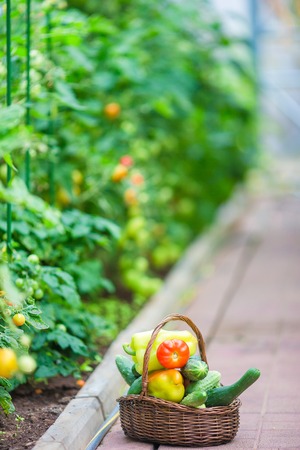Understanding the British Allotment Tradition
If you stroll through many British towns and villages, it’s not unusual to spot neat rows of veg patches behind wire fences, tucked away in unexpected corners. These are allotments—shared plots of land where locals grow their own fruit, veg, and flowers. The tradition of allotments dates back to the nineteenth century when urbanisation and industrialisation pushed people into crowded cities with little access to green space. Landowners and councils responded by setting aside parcels of land for working families to cultivate their own food, both as a necessity and a leisure pursuit.
Allotments have since become an enduring feature of British neighbourhoods. They’re more than just practical growing spaces; they represent community resilience, self-sufficiency, and the joy of nurturing something from seed to harvest. In times of war and economic hardship—most famously during the Dig for Victory campaign in WWII—allotments provided vital food security. Today, they’re cherished for promoting well-being, biodiversity, and local camaraderie.
The ethos underpinning allotments resonates even if you don’t have access to a large plot. The idea of “the allotment on your doorstep” captures this spirit: bringing the traditional values of shared cultivation and seasonal eating right into your own small garden or even onto a balcony. As we plan our mini veg patch, it’s worth remembering that this isn’t just about growing food—it’s about connecting with a tradition deeply rooted in British culture.
Choosing the Right Spot: Assessing Your Space
Before you begin planting, it’s vital to assess your available space and determine its suitability for a mini veg patch. Whether you’ve got a modest front step, a narrow yard, or a shared communal garden, understanding the unique characteristics of your spot will help ensure a thriving allotment right on your doorstep. Here’s how to make an informed decision:
Sunlight: The Essential Ingredient
Most vegetables crave sunlight, ideally around 6-8 hours per day. Observe your space at different times—morning, midday, and late afternoon—to note where the sun hits strongest and where shadows linger. Keep in mind that north-facing areas in the UK typically receive less direct light, which may limit your crop choices but doesn’t rule out growing altogether.
| Aspect | Sunlight Level | Suitable Crops |
|---|---|---|
| South-facing | Full sun (6-8 hours+) | Tomatoes, courgettes, beans |
| East/West-facing | Partial sun (4-6 hours) | Lettuce, carrots, radishes |
| North-facing | Low sun (2-4 hours) | Spinach, chard, salad leaves |
Access: Practicalities Matter
Think about how easy it is to reach your chosen plot daily. You’ll need convenient access for watering, weeding, and harvesting. If you’re relying on containers or raised beds near your front door or down a side alleyway, consider how far you’ll be carrying compost or tools and whether there’s any risk of plants being disturbed by pets or passers-by.
Microclimate: Spotting Local Quirks
The UK’s weather can be capricious, but even within one street microclimates can vary. Sheltered spots next to brick walls might enjoy extra warmth; exposed corners could bear the brunt of chilly winds. Look for areas protected from prevailing winds yet not so enclosed that they become frost pockets.
Microclimate Checklist:
- Shelter from wind (hedges, fences, walls)
- Avoid frost-prone hollows or dips in paving
- Proximity to water sources (tap or water butt)
- Drainage—avoid persistently soggy ground
A Note on Urban Spaces
If you’re working with a balcony or concrete slab rather than soil, don’t fret. Container gardening is perfectly suited to city living and can make use of railings and vertical spaces for climbing plants like peas or runner beans.
The right site makes all the difference—spend some time observing before digging in and your doorstep allotment will get off to a flying start.

3. British Favourites: Selecting Your Veg
Choosing the right vegetables is at the heart of any successful mini veg patch, especially when you’re working with the ever-changeable British climate. Our weather may be unpredictable, but it’s also perfectly suited to a selection of classic crops that have been staples in UK gardens for generations. Runner beans are a perennial favourite—these climbers thrive in our mild summers and provide both vibrant flowers and abundant harvests. Kale, another British stalwart, is famously hardy; it shrugs off frost and keeps producing leafy greens well into autumn. Of course, no British veg patch would be complete without potatoes—the humble spud. Whether you fancy earlies like Charlotte or maincrops such as Maris Piper, potatoes are not only easy to grow but deeply embedded in local food culture, from Sunday roasts to chip shop suppers. For those with limited space, consider compact varieties like dwarf French beans or salad leaves that can be cut-and-come-again. While tomatoes and courgettes can do well during warmer spells, sticking to tried-and-tested favourites ensures your doorstep allotment delivers reliable results—and plenty of opportunities for hearty home-cooked meals.
4. Tools of the Trade: Must-Have Kit for Small Spaces
Setting up a mini veg patch on your doorstep in Britain doesn’t require a shed full of equipment; with space at a premium, it’s all about choosing versatile, compact tools and resources that deliver maximum impact with minimum clutter. Below is a guide to the essentials for every doorstep gardener, blending practicality with sustainability—and a few thrifty tips along the way.
Essential Tools for Doorstep Gardening
| Tool | Purpose | Sustainable/Thrifty Alternative |
|---|---|---|
| Trowel | For planting, digging, and transferring compost in pots or planters. | Reuse old cutlery or sturdy spoons as makeshift trowels. |
| Hand Fork | Loosens compacted soil and helps weed small containers. | Repurpose kitchen forks for light soil work. |
| Watering Can (Small) | Gentle watering without flooding young plants or seedlings. | Upcycle milk bottles or large yoghurt pots with holes poked in the lid. |
| Pruning Shears/Secateurs | Keeps herbs and veg tidy; encourages healthy regrowth. | Sharp kitchen scissors can suffice for most soft stems. |
| Pots & Planters | Grow veg in limited spaces—think vertically as well as horizontally. | Save old buckets, wooden crates, or food containers for planting. |
| Compost Bin/Bucket | Makes your own compost from kitchen scraps, reducing waste and improving soil health. | Create a DIY composter using stacked lidded tubs or an old dustbin with holes drilled in the base. |
Smart Storage Solutions
If you’re short on space, consider collapsible or multi-use tools—a hand fork-trowel combo, for example. Stackable planters and hanging pots help keep pathways clear while maximising growing area. A simple crate tucked by the door can hold tools neatly between uses.
Sustainability at Home
The British doorstep gardener has plenty of options for reducing their carbon footprint. Collect rainwater in a water butt or bucket for irrigation. Use peat-free compost where possible and source seeds from local swaps or community groups to avoid unnecessary packaging. Save seeds from this year’s crops to sow next season—runner beans, tomatoes, and peas are particularly easy starters.
Thrifty Tips for Every Gardener
- Check charity shops or local online marketplaces for pre-loved tools and planters—they often have bargains that just need a clean-up.
- Ask neighbours if they have spare pots or offcuts from previous projects before buying new.
- Turn old wellies or chipped mugs into quirky plant pots—just add drainage holes!
- If you’re after compost or manure, look out for free listings from local stables or councils offering green waste to residents.
A Note on Quality vs Quantity
You don’t need to buy everything at once; start with the basics and build your kit as your confidence grows. Invest in one or two solid tools that will last—the handle of a decent trowel might outlive several seasons of veg growing on your front step. With these essentials, you’ll find your mini veg patch both manageable and rewarding—proof that good things really do come in small packages on British doorsteps.
5. Seasonal Planning: Sowing and Growing Across the Year
Getting the most from your doorstep allotment means thinking ahead and working with the natural rhythm of the British seasons. The UK’s climate, while famously unpredictable, offers ample opportunity for year-round growing if you plan wisely. Here’s how to break down your mini veg patch calendar and make sure something tasty is always on the way.
Spring: Kickstarting the Growing Year
As soon as the worst frosts are behind us—often by late March or early April—it’s time to get sowing. Hardy crops such as broad beans, peas, lettuce, carrots, and beetroot can go straight into the soil. Indoors or under cover, start tomatoes, chillies, aubergines, and courgettes in pots ready to move out when temperatures rise. Don’t forget potatoes; chitting seed potatoes in February gives them a head start before planting in late March.
Summer: Making the Most of Warmth
The long days of June to August are prime time for growth. Successional sowings of salads and radishes keep your patch productive. French beans, runner beans, sweetcorn, and squash thrive now. Keep watering consistently and feed hungry plants like tomatoes regularly. Pinch out side shoots on tomatoes for stronger fruiting and keep an eye out for pests like aphids and slugs.
Autumn: Extending Your Harvest
As nights cool, shift focus to robust crops that appreciate a chill. Sow overwintering onions, garlic cloves, and hardy greens such as kale or spinach in September and October. Lift maincrop potatoes before frost bites and store them somewhere dark and dry. Don’t forget to collect seeds from favourite annuals for next spring—an easy way to save money.
Winter: Preparing and Protecting
Although growth slows down, winter doesn’t mean nothing happens on your plot. Brussels sprouts, parsnips, leeks, and purple sprouting broccoli can all be harvested through winter’s leaner months. Protect any remaining salads or herbs with cloches or fleece. Use this quieter period to mulch beds with compost or well-rotted manure and tidy tools ready for spring’s rush.
Practical Tips for Year-Round Success
– Use a simple wall planner or app to track sowing dates.
– Try companion planting (e.g., marigolds with tomatoes) to deter pests naturally.
– Rotate crops each year to avoid soil-borne diseases.
– Embrace succession planting—little and often—to keep harvests coming.
– Don’t be afraid to experiment; every garden is its own small experiment station.
Your Doorstep Allotment’s Secret Weapon
The real key? Observation. Pop outside regularly—even a few minutes a day—to spot weeds before they take over or notice when something needs water. Over time, you’ll tune into your microclimate—whether your step gets more sun than your neighbour’s or if wind whips round the corner—and become a better grower season by season.
6. Keeping It Neighbourly: Wildlife, Pests, and Etiquette
One of the true joys of having a mini veg patch at your doorstep is witnessing the rich tapestry of local wildlife that comes to visit. Bees, butterflies, birds, and hedgehogs can all become regular guests if you design your patch with nature in mind. While it’s tempting to focus solely on maximising your harvest, it’s equally important to consider how your growing space fits into the broader urban ecosystem. Leaving a corner a little wild or planting pollinator-friendly flowers amongst your veg can encourage beneficial insects and provide crucial habitats. At the same time, you’ll need to balance this with protecting your crops from less welcome visitors—slugs, pigeons, and other pests are part and parcel of British gardening life. Opt for organic deterrents where possible: copper tape for slugs, netting for brassicas, and perhaps a scarecrow or two if you’re feeling traditional.
Community spirit is another key ingredient in successful doorstep allotmenteering. Even if you’re gardening in your own front or back garden, what you do will have an impact on neighbours—whether it’s a climbing bean that leans over the fence or the scent of freshly dug compost wafting next door. There are unwritten codes: keep paths clear, avoid letting plants sprawl into shared spaces, and don’t leave tools lying about. If you’re part of a shared allotment scheme or community growing project, remember to take turns with communal resources like water butts or compost bins, and always greet fellow gardeners with a cheery ‘morning’. Sharing surplus harvests—be it runner beans or rhubarb—is not just good manners; it’s the heart of British allotment culture.
Above all, treat both wildlife and neighbours with respect. A harmonious veg patch is one where robins hop between kale leaves, bees buzz through courgette flowers, and friendly chats over the fence lead to swapped tips and seeds. By striking a thoughtful balance between productivity, ecology, and community etiquette, your doorstep allotment will thrive—not just as a food source, but as a cherished part of local life.
7. Harvest Time and Beyond: Making the Most of Your Patch
When your mini veg patch finally bursts into a riot of colour and flavour, it’s time to reap the rewards of your careful planning and hard work. Knowing when to harvest is key: pick peas while pods are still tender, dig up spuds before they get too large and woody, and snip herbs regularly to keep them bushy. A gentle morning harvest is often best, as veg are at their freshest before the midday sun. Once you’ve gathered your bounty, think about storage—root vegetables like carrots and beetroot keep well in a cool, dark place, while leafy greens benefit from being used quickly or stored in the fridge wrapped in damp kitchen roll.
Swapping, Sharing, and Storing
If your patch is more productive than expected (courgettes always seem to over-deliver!), consider swapping excess with neighbours or friends. Local allotment communities and online groups are fantastic places for bartering your surplus for something new—perhaps a jar of homemade chutney or a handful of someone else’s tomatoes. This spirit of sharing is a hallmark of British allotment culture, helping everyone enjoy greater variety and avoid waste.
Celebrating Your Success
Don’t forget to mark your achievements—after all, growing even a few meals’ worth of produce on your doorstep is something special. Share photos with local gardening clubs or take part in village produce shows if you fancy a bit of friendly competition. Hosting a summer tea in your garden or simply sharing a salad with family made entirely from your own plot are lovely ways to celebrate. Embrace the camaraderie that comes with homegrown veg; it’s not just about food, but building connections and memories within your local community.
Looking Ahead
The end of one growing season is just the start of another. Use any lessons learnt this year to plan improvements for next spring—perhaps trying new varieties or fine-tuning your layout. With each cycle, your doorstep allotment will become more productive and rewarding, firmly rooting you in both tradition and the joys of sustainable living.


